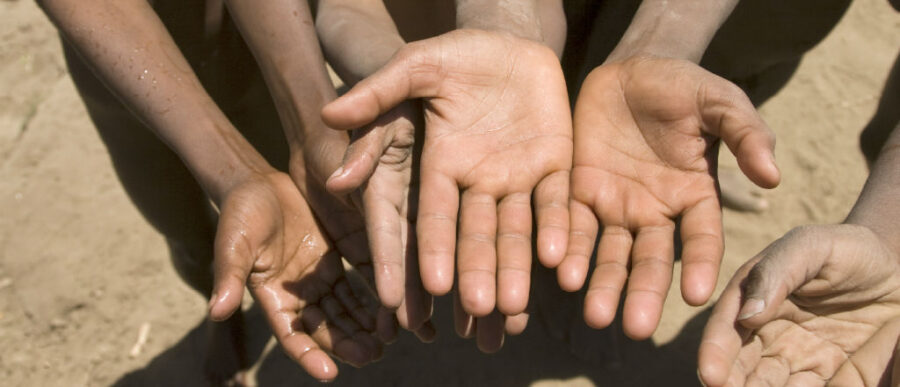This summer, the government of Bolivia approved legislation to allow children as young as 10 to work, so long as their jobs don’t interfere with their education. The news sparked strong criticism from human rights groups, because Bolivia is a signatory to a United Nations convention that sets 14 as the minimum age for child laborers. The Bolivian measure comes at a time when the plight of thousands of children crossing illegally into the United States from Central America has cast a spotlight on the challenges facing lower-income countries in Latin America and elsewhere.
Many of these nations are facing economic and social pressures that have spurred them to allow children to take on fatiguing, often dangerous, jobs. At the same time, efforts to prevent child labor have implications for the economic growth and long-term prosperity of countries where it is commonplace, experts say.
In recent years, countries in Latin America and elsewhere have pledged to uphold international standards governing the exploitation of child labor. In addition, the International Labour Organization (ILO) and sovereign states have undertaken several initiatives to discourage such practices. But experts generally find that progress has been slow.
Although most child workers toil in agriculture, thousands are employed in other high-risk sectors such as mining, dumpsites, domestic labor, fireworks manufacturing and fishing, according to the ILO and the U.S. Department of Labor. Many are coerced into illegal work such as drug and gang activity, or prostitution.
Two key ILO conventions relate to of child labor, according to Janice R. Bellace, a Wharton professor of legal studies and business ethics. The concept behind the first, C.138, which governs Minimum Age for Entry into Employment, is that “a person younger than 18 is not fully capable of giving consent to work as a soldier, a prostitute” and so forth. This convention does not exclude all categories of agricultural employment. Yet, “some kinds of agricultural work can be dangerous. It is not bucolic work. In particular, those who are under 18 should not be operating cutting machines.”
Bellace adds that C.138, “is usually the more important” of the two conventions, in part because C. 138 “takes into account the level of economic development in a country. It also considers the type of work — regular work versus what the convention calls ‘light’ work — and considers how many hours a week the child is working and whether it is during school time or not.” Overall, C.138 is very pragmatic. Countries that ratify it and commit to taking “progressive measures” to improve the situation of children living there. However, “no one expects the situation to change overnight, in part because widespread use of children usually occurs because of poverty and low economic development.”
In contrast, the second relevant convention, C.182, which addresses the Worst Forms of Child Labor, applies to activities that are physically or morally dangerous for children under 18. In several countries in Latin America, the worst forms of child labor — such as commercial sexual exploitation, trafficking of children for labor, and the use of children in armed conflicts and the drug trade — pose particular challenges because they involve criminal activities that are well-hidden and difficult to address, Bellace says.
Bolivia is one of the most problematic countries for implementing C.138, because its informal sector accounts for some 75% of all jobs. According to the ILO, other countries in the region, where more than two-thirds of the overall workforce hold “informal” positions, include El Salvador, Honduras and Nicaragua. With so much hiring going on “under the table,” it is impossible to calculate the full extent of ILO code violations, the agency notes. Official labor force data starts with age 15, so those children who are working in the informal economy “are often missed,” Bellace says. “Once it is illegal, it is not reported. So how can one tell if any progress is being made? It’s an interesting data collection or estimation challenge.”
It is difficult to conceive of a child “who will continue to go to school when the child is working full time.” –Janice Bellace
Toxic Substances and Sharp Knives
In Central America, a wide range of factors are responsible for the continuation of child labor patterns, according to the Labor Department. These include endemic poverty, which renders families highly vulnerable to any economic shock; the absence of strong laws against labor abuse; weak institutional enforcement, and limited or non-existent educational access.
One agency study reported that children who work in coffee production in El Salvador, for example, were “exposed to the elements, toxic substances, long workdays and injuries from machetes and sharp knives.” Such children cut, plant, pick crops, and carry heavy loads. According to El Salvador’s 2011 School Registration Census, 8,217 children in the country were employed at harvesting sugarcane and coffee. That same year, 485 children were found working in fireworks production and garbage scavenging.
The Labor Department study notes that “children making fireworks are at risk of dismemberment and burns, while children who scavenge are exposed to medical waste and are at risk of gastrointestinal diseases, insect bites and physical abuse.” The report noted that children “are also recruited into gangs to perform illicit activities related to the arms and drug trades.”
The government of El Salvador estimates that about 30% of gang members are children. As just one measure of the dangers, between January and October 2012, 41 schoolchildren were killed as a result of gang violence. Given that grim reality, it is not surprising that the El Salvadoran government has stated that gang violence and recruitment have hindered school attendance. Children’s access to education is hampered further by the cost of materials and having to travel long distances to attend school. In some cases, girls do not attend school because they have childcare responsibilities while mothers work. In Guatemala, similar conditions continue despite recent policies to address them.In a 2013 report to the U.N. General Assembly, Najat Maalla M’jid, a Moroccan physician, noted that the government of Guatemala “has established adequate laws, policies and institutions, and mobilized considerable energy and resources, to enhance the protection of children from sale, prostitution and pornography, and of child rights more generally.”
Yet, the government is “struggling to have an efficient sustained impact on the lives of vulnerable children due to the unknown extent of the sale of children, child prostitution and child pornography in the country; the proliferation of institutions addressing only a few aspects of the phenomena; and weak inter-institutional coordination,” M’jid said. “Existing policies on child rights have weak coherence, and lack adequate resources, time-bound indicators and systematic monitoring and evaluation.”
Moving Backward?
“Bolivia is going backwards,” says Bellace, nothing that it is difficult to conceive of a child “who will continue to go to school when the [same] child is working full time. The Bolivian legislation says that the child is to work under the supervision of the parent. This rarely happens….” Most cultures consider prepubescent children too young to work because they lack the judgment and the attention span necessary to do most jobs, Bellace adds. “Children of this age working a full day are likely to have their minds wander, to get tired, and then accidents occur. Also, it is impossible to believe that the child consents to this. The parent tells the child to work…. Admittedly, these are poor families. But the cycle of poverty will not be broken unless poor children get a basic education.”
Many lower-income families believe they cannot afford not to let their children become wage earners as soon as they are old enough.
The short-term economic logic for parents allowing children to work — rather than stay longer in school — is clear, says to Barbara Kotschwar, research fellow at the Peterson Institute for International Economics. Many lower-income families believe they cannot afford not to let their children become wage earners as soon as they are old enough, regardless of the long-term consequences on earning power. “These people are particularly vulnerable if the economy of the country slides,” she notes.
The new rules in Bolivia obviously will undermine progress toward meeting the U.N. Millennium Development Goal of ensuring that by 2015, children everywhere will be able to complete a full course of primary education. “It is discouraging is that the Bolivian government has legalized a policy of not taking progressive measures to improve the situation,” Bellace notes.
More generally, there has been progress elsewhere. Enrollment in primary education in developing regions overall reached 90% in 2010, up from 82% in 1999. Still, 57 million children of primary school age did not attend school in 2011. Other countries in South America are making progress, too, says Bellace. “Consider Brazil, which has implemented several policy initiatives, with one being particularly successful” — increasing widespread, conditional cash transfer programs, which provide funds to parents as an incentive for them to keep their children in school.
According to the ECLAC, the U.N. economic agency for Latin America and the Caribbean, programs targeting indigent families include Families in Action in Colombia, the Family Allowance Programme (PRAF) in Honduras and the Tekoporâ program in Paraguay. Others, such as the Bolsa Família program in Brazil and the Human Development Grant in Ecuador, include poor but non-indigent families in their target populations, in addition to the very poor.
But such programs have come under criticism “for not addressing the quality of education,” Kotschwar says. In some cases, teachers do not necessarily show up in the classroom, are not properly trained or the course may be focused on skills that don’t match up with current labor market needs. Nevertheless, program directors can claim that the average child is staying in school longer.
What could multinational corporations do to discourage exploitative child labor practices in their global supply chains? The Labor Department’s Bureau of International Labor Affairs (ILAB) has prepared a practical ‘toolkit’ for enacting what it describes as a comprehensive and transparent social compliance system.
ILAB regularly monitors child labor practices in every country in Central America and the Caribbean (with the exception of Cuba), collecting and assessing information from a broad range of sources, including local governments, non-governmental organizations and the private sector. One agency official notes that, while it has no authority to enforce the implementation of foreign laws that reflect the ILO’s conventions on child labor, ILAB can share information with U.S. Immigration and Customs Enforcement (ICE), the principal investigative arm of the U.S. Department of Homeland Security, which has authority to interdict shipments by non-compliant companies before they cross the U.S. border.
“The worst thing is that a child who works at [the age of] 10 is a child who will never be able to get even a semi-skilled job, even if he or she lives to be 80.”— Janice Bellace
Moreover, in an age when corporate social responsibility has become a mantra for so many global companies, firms risk reputational damage if they or their overseas suppliers are found to have failed to comply with ILO norms regarding child labor. One recent example: Samsung Electronics announced it will do 30% less business with one Chinese supplier after Samsung found it was illegally employing child workers. According to reports, the move followed rising pressure on Samsung to confirm that Chinese suppliers follow local labor laws.
A Downward Spiral
Economists agree that Bolivia and its lower-income counterparts in Central America will never emerge from poverty unless future workers are equipped with skills that match up with those in more advanced economies. And while some progress has been made in recent decades, critics say it’s not nearly enough.
According to the World Bank’s Human Development Report Office, the average schooling of Guatemalans aged 25 or over rose from less than two years of primary education in 1980 to almost four years in 2007. In Nicaragua, those figures improved from almost three years (1980) to more than five years in 2007. In Honduras, they rose from about 3.7 years (1980) to six years (2007). In El Salvador, the figure went from about three years (1980) to about seven years. Even in Costa Rica, the wealthiest and best-educated country of Central America, the average adult completed only about eight years of schooling in 2007.
“The real problem is economic development,” says Bellace. “Any country that has high levels of child labor also has high adult unemployment.” So why employ children when there are unemployed adults? “Because children are cheaper; they get paid much less. Should any government prefer that children be working at very low wages when their parents are unemployed? Is this a strategy for economic advancement? Of course not. All the Asian tigers made education a priority, and one finds very low levels of child labor in those countries.”
Central and South American countries should look to the example of nations like Singapore and Korea, Bellace adds. “The worst thing is that a child who works at [the age of] 10 is a child who will never be able to get even a semi-skilled job, even if he or she lives to be 80. They will be poor for life, and it is likely that their children will be, too. Their entire life is stunted because there was no policy of keeping them in school until 14. Health improvement is important — and this is a focus in Africa. But attention to basic education is equally as important.”



